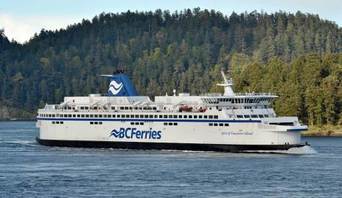 When residents of Victoria and Saanich head to the polls this fall, they’re likely to have an unusual opportunity to vote for a better future. Not in the form of a candidate, at least not yet, but in the form of a question asking if they want to start down the road of amalgamating the two municipalities. This is a great development for our region. Remember the Capital Integrated Services and Governance Report released by the province last year? It describes 16 types of local government services by municipality, including what the service is, what parts are shared with other governments, the different ways it’s delivered, what it costs per capita, how decisions are made and who pays. The authors could not identify a single municipal service that is provided the same way for the same cost across this region. That’s not good for citizens or for business. The need for better governance through fewer governments has been a theme for some time here at the chamber. Victoria was incorporated in 1862. The chamber was established in 1863. I’m going to assume things were well aligned until 1906, when Saanich and Oak Bay were incorporated. Chamber lore has it that that’s when the chamber’s campaign for amalgamation began. And finally a ray of light, thanks to the citizens’ advisory committee that recommended that Saanich invite all willing municipalities to participate in a citizens’ assembly on amalgamation. At first glance, the fact that only one other municipality — Victoria — stepped up might be disheartening. In reality, it has created a chance to get this done. We need the leadership of our region’s two dominant municipalities. And we know from experience that the more municipalities involved, the more difficult it is to make a decision. Let’s start with two. We can always add more later — or not. It’s a big win either way. Between them, Saanich and Victoria make up more than half the population of our metropolitan area. They have the bulk of our region’s businesses and the largest tax bases, police services and municipal services. These are highly integrated communities, and it’s not difficult to imagine them as a single city. In fact, most citizens don’t pay much attention to where one ends and the other begins, as they go back and forth. Together, they would be a magnificent new metropolis with the size and clout to compete for funding and opportunities out of reach of either one, and the combined resources to provide an even better level of public service. Of course, change is never easy and few issues are as close to home — quite literally — as transforming the community in which we live. We have current evidence that a citizens’ assembly can work because it was used last year by North Cowichan and Duncan, a region that has also had a protracted dance with amalgamation. A civic lottery conducted by Canada Post ensured the assembly was made up of a broad cross-section of residents who reflected the area’s population. The process was well-defined, with the 36-member assembly spending six of their Saturdays diving deep into the issues over the course of four months. In the end, the group emerged with a clear recommendation to strengthen both municipalities by amalgamating. It was a credible process and outcome because it was taken out of the hands of those with an interest in the status quo and placed in the hands of engaged citizens. With the mayors and councils of Saanich and Victoria publicly supporting a citizens’ assembly, we have an incredibly rare window of opportunity to explore the public’s interest in building a remarkable core city for our region. The single most critical factor will be to avoid any sense that the outcome creates a winner and a loser, but rather a great new municipality that benefits everyone. The second critical factor will be patience. Experience shows that amalgamations need 10 years to work out the bugs and deliver on their promise. Victoria has a jewel of a downtown, and Saanich is cherished for its neighbourhoods, parks and recreation. Combined, we will have a truly spectacular world-class city and a bigger voice on the national and international stage. Municipal elections are Oct. 20, and we look forward to citizens of Saanich and Victoria having a clear question on the ballot offering them a chance to dream big. Catherine Holt is the CEO of the Greater Victoria Chamber of Commerce. This column originally appeared in the Times Colonist on MAY 11, 2018 12:59 AM  Media and much of the public were quick to laugh at BC Ferries “name that ship” contest when it was announced in 2015. But, after all the sarcastic suggestions (i.e. Spirit of Bad Wi-Fi) and headshaking over why the corporation would even consider a PR stunt that left them so vulnerable, something interesting happened. The contest worked. In fact it exceeded expectations. Not only did BC Ferries end up with great names for their vessels, the social media and marketing department was able to engage with consumers on a level that far surpassed its goals. That story was one of many entertaining insights from BC Ferries CEO Mark Collins, who spoke to more than 80 people at The Chamber’s Business Leaders Luncheon on April 18. Mark’s inspirational commentary on BC Ferries served as a reminder of why British Columbians, despite our grumbling, are generally proud of our world-class service. There is still much work to do though. Challenges include convincing folks on small islands that their input is valued. Mark spoke about the perception in some places that the “suits from the South Island” were only interested in making decisions in the interest of the corporation, not communities. “This is the feedback I’m getting from customers, and it’s clear they don’t trust us — that’s a problem,” he said, describing how the corporation has had to first prove it’s being honest before it can even begin to work with some communities. To be clear, people feel safe taking the ferry. But can you imagine trying to sell your product to customers who, for generations, have grown up thinking it’s their birthright to mistrust your organization’s leaders? To change that perception, Mark says BC Ferries has adopted an aspirational vision “to act in a way that earns the trust and becomes valued by the communities they serve.” The corporation’s new mission is to connect “customers and communities with people and places that are important in their lives.” No mention of being a transportation service, because that’s not how people think about BC Ferries. It is simply our connection to people, to services and to the goods we need for a healthy regional and provincial economy. BC Ferries is coming off a record year, having moved 21 million passengers in 2017 – the most ever. The corporation is moving to a new reservation system that will offer more convenience for customers. It makes sense to operate like an airline or train, rather than the current method of charging an extra fee just to guarantee a specific boarding. Mark also confirmed that he is looking at the feasibility of a route connecting the West Shore with downtown Victoria. It’s very early, he cautioned, but doesn’t that sound exciting? Catherine Holt is CEO of The Chamber (Greater Victoria Chamber of Commerce). Chamber Events for May: Tuesday, May 1 l AGM & Annual Mayoral Address l 11:30 a.m. to 1:30 p.m. l Delta Ocean Pointe Resort & Spa (100 Harbour Rd.) Thursday, May 3 l Prodigy Group Mingle l 5:00 to 7:00 p.m. l Strathcona Hotel Rooftop (919 Douglas St.) Thursday, May 10 l 2018 Greater Victoria Business Awards Gala l 5:00 to 7:00 p.m. l Fairmont Empress (721 Government St.) Tuesday, May 15 l 5 Chamber Luncheon with Premier John Horgan l 11:30 a.m. to 1:15 p.m. l Crystal Gardens (720 Douglas St.) Thursday, May 17 l Business Mixer l 5:00 to 7:00 p.m. l Marina Restaurant (1327 Beach Dr.) Wednesday, May 23 l Member Networking Breakfast l Cedar Hill Golf Course (1400 Derby Rd.) |
Archives
June 2024
Categories
All
|
Copyright © 2021 Greater Victoria Chamber of Commerce. All rights reserved.
#100 – 852 Fort St., Victoria, BC V8W 1H8, Canada | Phone: (250) 383-7191
[email protected] | Site Map
#100 – 852 Fort St., Victoria, BC V8W 1H8, Canada | Phone: (250) 383-7191
[email protected] | Site Map
Notice a typo or broken link? Please let us know so we can fix it ASAP. Email [email protected]

 RSS Feed
RSS Feed
